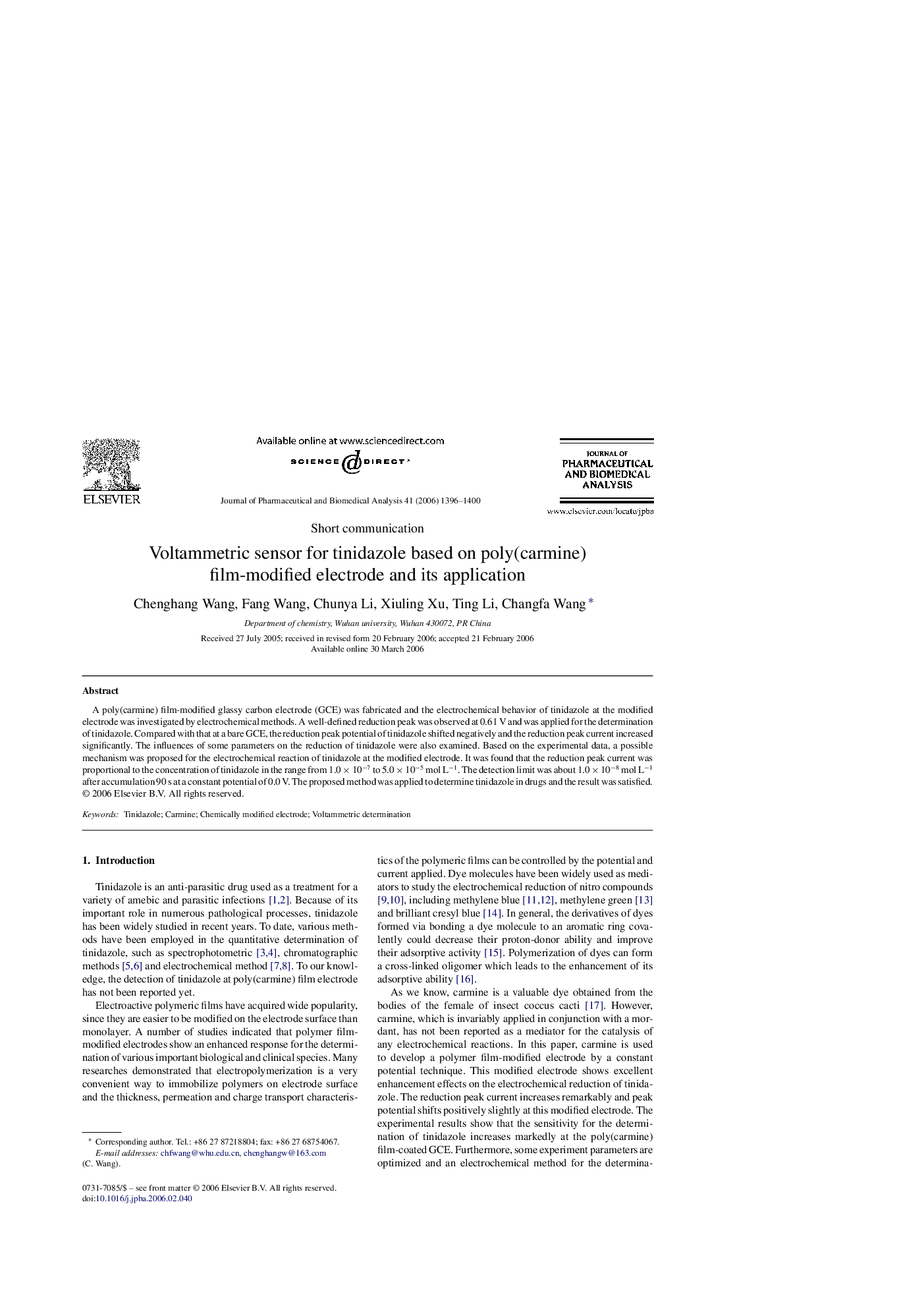| Article ID | Journal | Published Year | Pages | File Type |
|---|---|---|---|---|
| 1224969 | Journal of Pharmaceutical and Biomedical Analysis | 2006 | 5 Pages |
Abstract
A poly(carmine) film-modified glassy carbon electrode (GCE) was fabricated and the electrochemical behavior of tinidazole at the modified electrode was investigated by electrochemical methods. A well-defined reduction peak was observed at 0.61 V and was applied for the determination of tinidazole. Compared with that at a bare GCE, the reduction peak potential of tinidazole shifted negatively and the reduction peak current increased significantly. The influences of some parameters on the reduction of tinidazole were also examined. Based on the experimental data, a possible mechanism was proposed for the electrochemical reaction of tinidazole at the modified electrode. It was found that the reduction peak current was proportional to the concentration of tinidazole in the range from 1.0 Ã 10â7 to 5.0 Ã 10â5 mol Lâ1. The detection limit was about 1.0 Ã 10â8 mol Lâ1 after accumulation 90 s at a constant potential of 0.0 V. The proposed method was applied to determine tinidazole in drugs and the result was satisfied.
Related Topics
Physical Sciences and Engineering
Chemistry
Analytical Chemistry
Authors
Chenghang Wang, Fang Wang, Chunya Li, Xiuling Xu, Ting Li, Changfa Wang,
